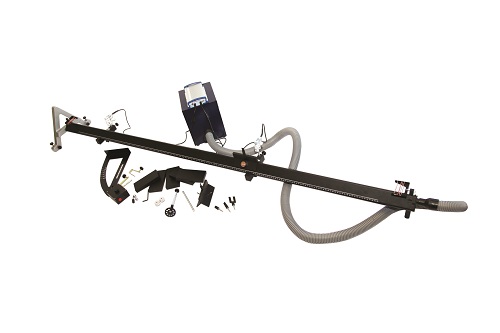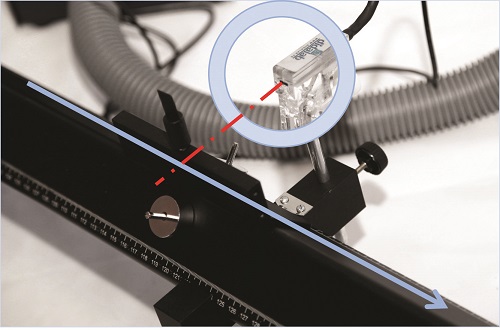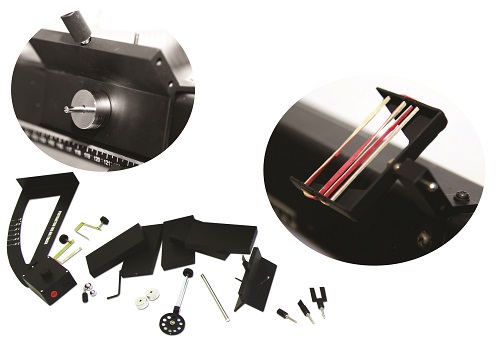Uniform motion and collisions: EXP100020
Référence : EXP 100 020

The air cushion bench is a scientific device used to study motion in a low friction environment. Its name is derived from its structure: air is blown into a bench equipped with small holes throughout its surface, allowing mobiles to slide in, thus minimising friction. The triangular base mobiles adapt perfectly to the bench shape and are used to study motion in low friction conditions. The air cushion bench is also used to study elastic and inelastic collisions. As very little energy is lost in friction, it is easy to prove the quantity of motion preserved before and after the collision. The bench can be used to calculate the gravitational force when it is inclined with respect to the horizontal plane or also act as a free fall system when vertical. An optical fork sensor system completes the bench to acquire measurements on the computer.
UNIFORM MOTIONS
An animated object of a uniformly variable rectilinear motion is observed. The instantaneous speed and the mean speed of
the object are determined in its uniformly variable rectilinear motion.
To express real speed of an object at a given point, Ät must be as small as possible. The smaller Ät, the closer mean speed will be to real speed. When Ät is close to 0, mean speed is close to the critical value, so that object mean speed is considered as equal to instantaneous speed at the point in question.
THE COLLISION LAW
A shock absorber is fastened to each end of the air cushion bench. Two mobiles are placed, at 30 cm and at 80 cm. We check that the air cushion bench is horizontal. Take the two mobiles with an overload disk and a flexible metal stopper. Use a scale to determine the weight of each mobile. Instil an initial low speed on one of the mobiles, while the other is
at rest, and record the trajectory. Check that total momentum and mechanical energy are preserved. Place a second overload on one of the mobiles. Instil an initial low speed on one of the mobiles, while the other is at rest, and record the trajectory. Use the conservation of momentum principle to determine overload weight, and check the result by weighing the overload.
FREE FALL
To determine the gravitational constant, the bench is used in vertical position. The electromagnet holder is placed on the
graduated rail above the first sensor so that ball initial speed is zero (the electromagnet is energised or de-energised via the software). The software displays ball speed on the first sensor, ball speed on the second sensor, and the time elapsing between the two measurements, thus giving the ball acceleration value. Acceleration value will be equal to the gravitational constant in free fall.
SUBJECTS APPROACHED
»»Uniform motions
»»Accelerated motions
»»The second Newton’s law
»»Accelerometry
»»The collision law
»»Free fall
NECESSARY EQUIPMENT
| Reference | Description | quantity | | PHM022565 | Air cushion bench (mechanic part only) | 1 | | PMM013961 | Timing system | 1 |
Computer is required |
|




